10 tips for choosing an LED strip
A few decades ago, the limit of dreams in the field of interior lighting were ordinary bulbs with colored glasses. And people were glad even to this! Now we have at our disposal LED strips that were first used for outdoor advertising, decor arches, niches and tiered ceilings, and now they can be safely considered as a full-fledged light source. They consume a minimum of energy and can be mounted anywhere. It remains only to figure out how to choose an LED strip for backlighting, calculate the required power, choose the color and accessories. Do not be afraid - there is nothing complicated.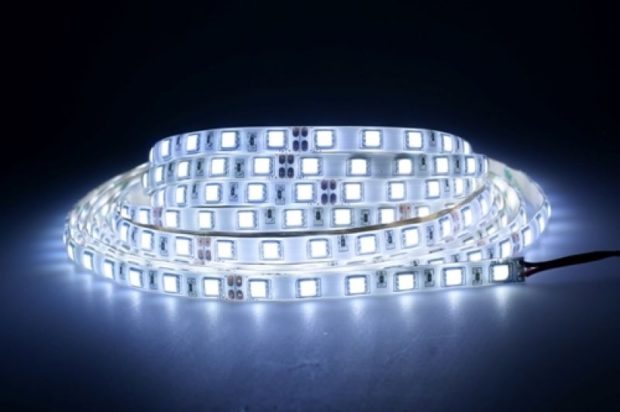
 A wide range of LED strips and accessories for connecting them! LedRus company works directly with factories and production, therefore, it guarantees high quality, long-term warranty and reasonable prices.
A wide range of LED strips and accessories for connecting them! LedRus company works directly with factories and production, therefore, it guarantees high quality, long-term warranty and reasonable prices.
No. 1. How does LED strip work?
Surely, on the Internet or from someone you know, you met a spectacular baseboard lightingceiling or work area in the kitchenmade from a continuous row of bulbs. This is the LED strip. Its basis is a dielectric strip only 0.2 mm thick. Conductive paths are applied to it, and on them, in turn, are contact pads on which the LEDs are mounted. Also on the tape there are resistors that limit the current consumption.
The LEDs on the tape are located at the same distance from each other, so that a uniform glow is achieved. The larger the LEDs and the higher their density, the brighter the glow.
Tapes are produced in bobbins 5 m long and 8 to 40 mm wide. Each tape is a set of separate modules 2.5-10 cm long, each module has a certain number of LEDs and resistors. There is room for cuts between the modules. This means that you can cut a fragment of the required length and / or connect several segments into one chain. The reverse side of the tape is often self-adhesive, which greatly simplifies its installation.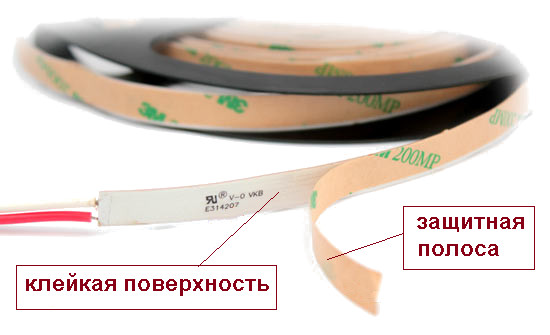
To connect the LED strip, you will need a power supply that will supply a current of 12 V to the LEDs (less often 24 V or 36 V), lowering the initial 220 V. For multi-color tapes, you also need a controller. To adjust the brightness can be used dimmers. 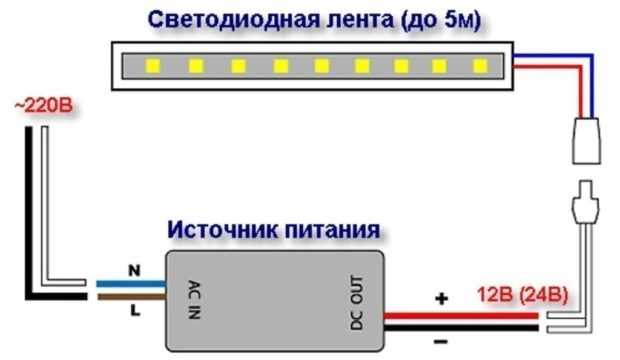
All data on voltage, glow colors, size of diodes, their number per meter and other information are indicated in the marking. Example: LED 12V RGBW SMD 5050 120 IP65. Explanation in the table below.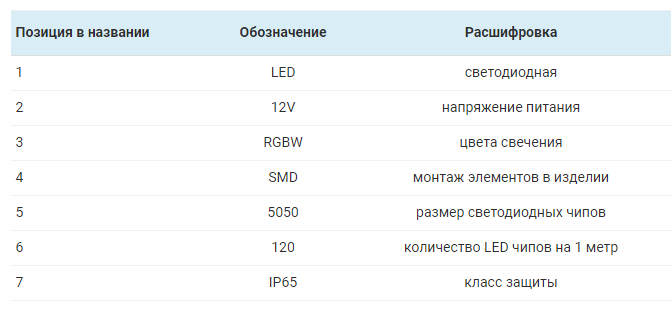
Pros of LED Strips:
- minimum energy consumption with a sufficiently high brightness;
- the ability to install in the most inaccessible places, the tape practically does not take up usable space;
- relative ease of installation;
- durability. If you have chosen a high-quality tape and provided it with the required conditions of temperature and humidity, then it will honestly enlighten the promised 20-50 thousand hours. Poor-quality tapes of unknown manufacturers may fail in the first year of operation;
- if one of the LEDs burns out, only 3 diodes will stop shining, and not all. This is due to the structural features of the tape;
- LEDs are not afraid of shock and low temperatures;
- the opportunity to realize interesting ideas in terms of lighting, for example, the effect of a soaring ceiling. Ribbons with a glow of different colors are produced, and some provide the ability to change the color and brightness of the glow.

Minuses:
- the need to use a power supply;
- after 20-50 thousand hours, the brightness of the LEDs decreases.
No. 2. Types of LED strips: one color or several?
According to the type of glow, two types of ribbons are distinguished: SMD (solid) and RGB (multi-color). Which LED strip is better to choose, so you can’t say for sure - it all depends on the interior design, lighting tasks and budget.
Single Color Ribbons (SMD)
Such a tape can give a luminous flux of only one shade. What kind of color it will be depends on which crystals are installed. Ribbons with crystals white color (W) are the cheapest, with crystals blue (B) red (R) and green (G) colors will cost a little more. Ribbons giving intermediate shadesfor example, purple, orange, turquoise or pink. Such a glow is obtained by applying a luminifor to a crystal, or by installing crystals of different colors in one LED and their simultaneous operation. If ribbons of standard colors are sold even in small stores, then specific shades will still have to be searched, and they will not shine so brightly.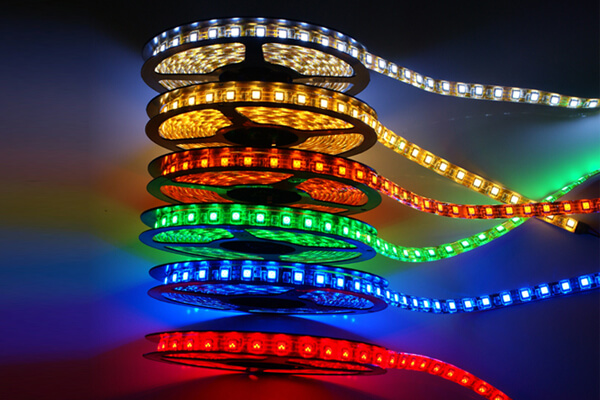
Colored ribbons are used as decorative illumination, since there will be less light from them, but a white ribbon can be used as a working light, for example, for illumination working area in the kitchen. However, white to white discord. For some reason, few people pay attention on the color temperature, depending on which three groups of white color are distinguished:
- warm white with a temperature of 2700 K and below;
- neutral white, up to 4000-4500 K;
- cold white, 6000 K and higher.

For bathroom lightingWorking areas are best to choose neutral white light. In theory, you can take cold white, but then the kitchen or bath risk turning into an operating room. For the living area, it is better to take a tape of warm white color, which brings cosiness to the room.
On sale you can find multi-white ribbon. She knows how to change the temperature of white light.
Also pay attention to such an indicator as color accuracy (CRI). It is necessary to take a tape with CRI> 70, and even better with CRI> 90, otherwise the colors of products, furniture and decor, and even the faces of households can be greatly distorted.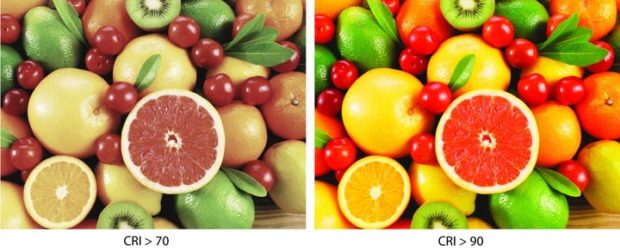
To connect a monochrome tape, you only need a power adapter - you do not have to buy any additional equipment. The main thing is only to correctly determine the shade.
Multicolor Ribbons (RGB)
Why choose a tape of any one color, if there is an opportunity to take one that can change the shade depending on your mood? Multicolor ribbons can produce several different colors at once due to the fact that they receive LEDs with three crystals: red (R), green (G) and blue (B) The first letters of these colors gave the name of the tape - RGB.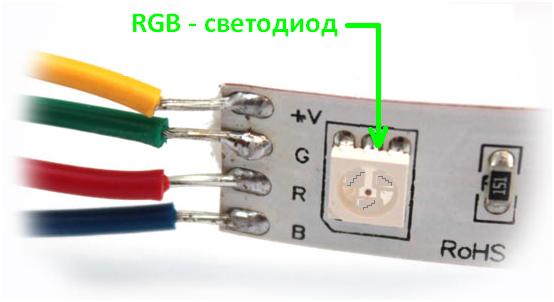
Different shades are obtained due to the glow of three crystals with different intensities - their radiation is mixed, as it were, and as a result forms the necessary shade. True, such a tape unable to shine with pure white light, and if it is necessary, then take the product that is additionally equipped with white crystals (W). These tapes are sometimes also called WRGB.
The hue of the glow, its intensity and brightness is determined by the signal from the RGB controller, which becomes an essential element when connecting this type of LED strip. Thanks to him, it is possible to implement effects such as treadmill, alternating shades, flicker etc. Just like a garland!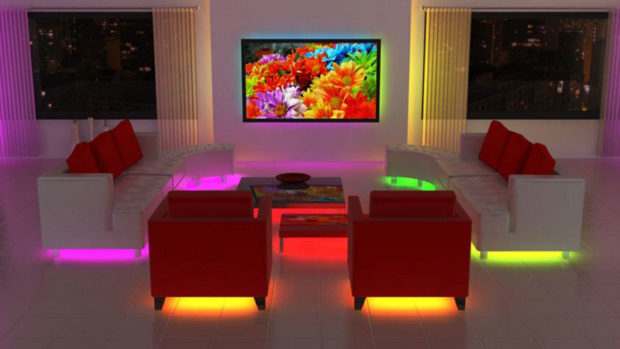
Multicolor ribbons are 2-3 times more expensive than monochrome ones and cannot be used as the main lighting due to the reduced brightness of the glow. Why does colored tape give less light? It's simple, because each diode consists of three small crystals, it usually shines only one, or two or three, but not at full power (depending on the selected mode). Even if all three crystals work simultaneously, with all their might, the light will still turn out less bright than from a single-color tape, where each LED has one large crystal.
The ability to change the color of the backlight seems a significant advantage, but in fact it most often turns out that such a toy bothers in a couple of weeks. The user stops at one shade and calms down.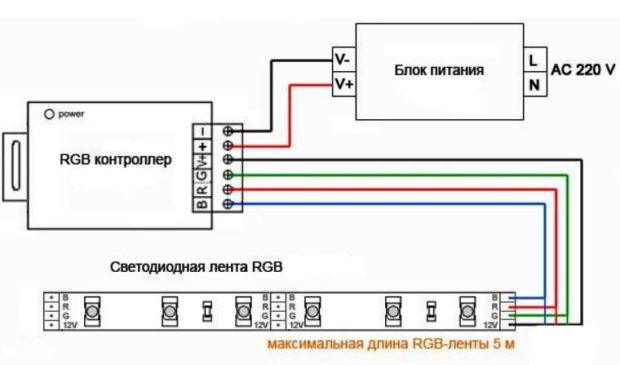
No. 3. LED strip brightness
The amount of light that an LED strip will give directly depends on two factors:
- LED size
- the density of LEDs on the tape, pieces / m.
To be extremely precise, the quality of the crystals also affects the brightness.
ABOUT LED size it is very easy to recognize by marking: after the abbreviation denoting the type of tape (SMD or RGB) there will be a four-digit number. For example, SMD3528 is a monochrome tape with diodes measuring 35 * 28 mm, and RGB5050 is color with diodes 50 * 50 mm.
The most commonly used LEDs are:
- SMD3528 gives a luminous flux from 0.6 to 5 lumens depending on the color. Such tapes are suitable only for decorative lighting. RGB3528 will give a luminous flux of only 0.3-1.6 lumens;
- SMD5050 will give a luminous flux of up to 15 lumens, but again it all depends on the color. Such a tape can already be used as a working or even main lighting. Diodes RGB5050 give a light flux of 0.6-2.5 lumens or a little more;
- SMD5630 give up to 18 lumens, they are used infrequently in residential premises - this is an option for offices, shops, streets, advertising signs. Such diodes can heat up during operation, so it is better to mount them on an aluminum profile.
ABOUT the density of the location of the diodes on the tape also reported in product labeling. The minimum quantity is 30 LEDs per meter of tape. The maximum depends on the size of the diodes themselves: if the SMD3528 fits 280 pieces, then the SMD5050 is only 120, and the SMD5630 is even smaller, only 72.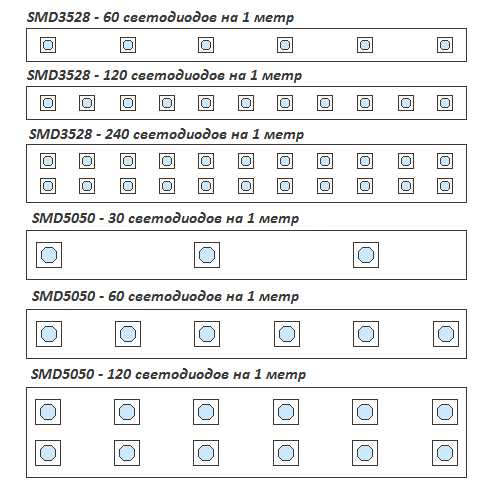
It turns out that a single-color tape SMD3528 with a density of 120 diodes per meter will give 120 * 5 lumens = 600 lumens of light per meter. This is about as much as a 40-watt incandescent lamp.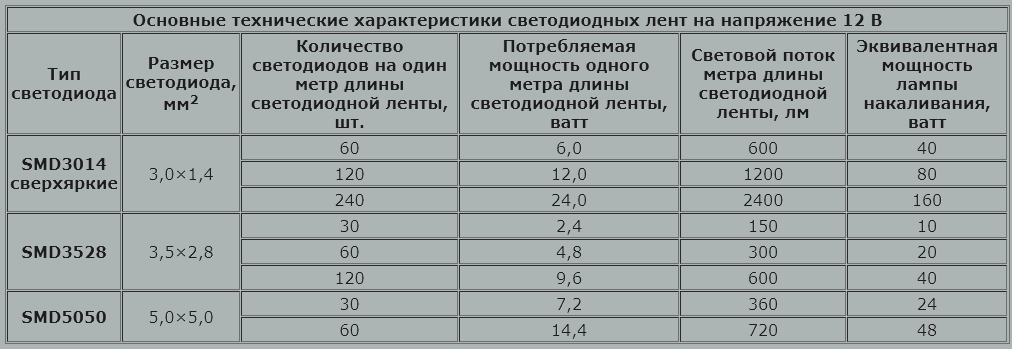
If necessary choose led strip for decorative lighting, then the calculation of the light flux is rarely performed - they focus on the visual perception of light. In this case, single-row tapes with 30 and 60 LEDs are best suited. If you plan the main lighting, then it is better to calculate and take a double-row tape or single-row for 120 diodes.
Calculate how much light the ribbon will produce., it’s easy, you can focus on the equivalents for an incandescent lamp. To get a certain type of lighting, you just need to count down. For example, you need illumination along the contour of the ceiling in a room 5 * 4 m, and you want to get a soft, but quite sufficient light for good lighting. We would get a similar effect from 5 incandescent lamps of 40 W each, only 200 W, and this is 3000 lumens (we focus on the table). The length of the tape for such a ceiling (5 + 5 + 4 + 4) = 18 m, which means that each meter of the tape should give 3000/18 = 167 lumens. You can take the SMD3528 tape with 30 LEDs, but if you take into account the loss of light, it is better to take the SMD3528 tape with 60 LEDs, or the SMD5050 with 30 LEDs.
Lighting standards for living rooms indicate the need to provide a luminous flux of 150 Lm / m2.
Some experts recommend focus on power: 10 W / m tape is suitable for decorative lighting, and for main lighting it is better to take a product with a power of 14.4 W / m or more. Typically, the power consumption parameter is indicated on the package, but in which case, it can be calculated independently.
Number 4. Power supply for LED strip
For the LED strip to work as it should, you will have to purchase a power supply (it's an adapter, go driver).Many mistakenly believe that its power should be equivalent to the power of an LED strip. It is correct to take a power supply with a power of 20-30% higher than the power of the tape.
As a rule, the manufacturer indicates the power for each meter of tape. You just have to multiply this parameter by the number of meters, add a margin of 20-30% and buy a suitable power supply.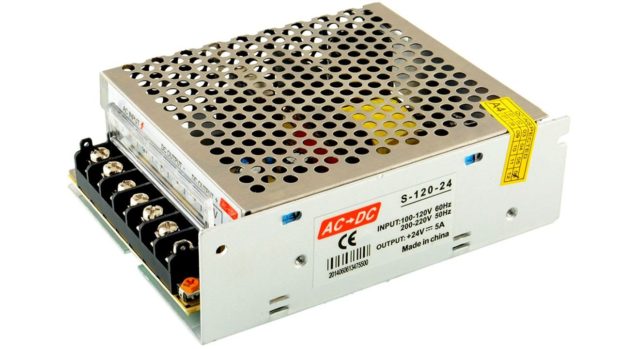
If the manufacturer did not indicate the power, then it is easy to calculate it yourself. So, for example, every three LEDs of size 3528 consume 0.24 W (current 20 mA), every three diodes 5050 - 0.72 W (current 60 mA). It is enough to multiply these values by the number of triads on the tape. Even easier - just use the table, which shows the power of 1 meter of the most common types of tapes.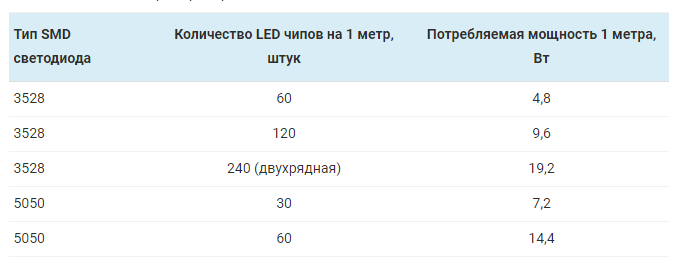
Let's say you plan to use 5 meters of tape SMD3528-60. The power consumption of all diodes will be 5 * 4.8 = 24 watts. If we add a margin, then we conclude that we need a power supply of 30-35 watts.
Be careful when connecting powerful lighting: 250 W and more units are equipped with cooling fans. They make noise, of course, not very much, but in the evening in the bedroom this monotonous hum can greatly affect nerves. It will be better to use two power supplies, to which to connect two equal lengths of tape. Do not hide the power supply behind a suspended or tensile structure, because this is a consumable item that sometimes needs to be replaced.
When buying a power supply, pay attention to working voltage of LED strip. Commonly used 12v tapes, therefore, a power supply unit needs 220-12 V. Remember that connecting a 12 V tape in a section longer than 5 m is not recommended - voltage losses occur, which leads to an increase in current and failure of LEDs. In 24 V and 36 V tapes voltage losses are less, but they are not so popular. For street lighting, use 220 V tapes.
No. 5. Controller for RGB tapes
For multi-color ribbons, the calculation of the power of the power supply is the same as described above, only for them it will be necessary to purchase a controller as well. Its power is equal to the power of the adapter, but may be slightly higher. A controller is needed to change colors, saturation and run various programs. It is mounted between the tape and the power supply.
Controllers are different:
- the simplest ones can only switch several colors;
- more expensive models allow you to create the effect of running lights, flicker or smooth shades;
- controllers with an IR remote control allow you to control the backlight remotely, but the controller should be located close to the remote control. The radio remote control allows you to control the tape even from another room, adjust thousands of shades and dozens of modes of operation. You can even program the tape to work at a specific time in a particular mode.
There are also controllers via Wi-Fi using a smartphone. Functionality is almost the same as that of radio models.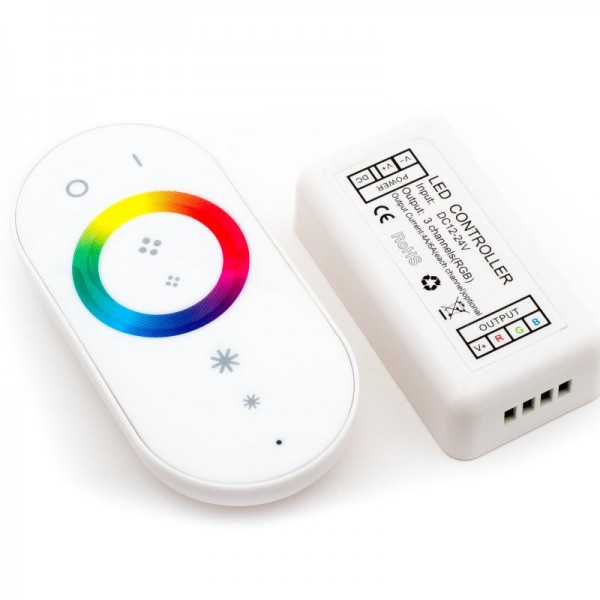
No. 6. LED Strip Protection Class
The degree of protection speaks of the degree of protection against moisture and dust. It is indicated in the marking as IP followed by two digits: the first indicates the degree of protection against ingress of solid particles, the second indicates protection against moisture.
Choose a tape based on its operating conditions:
- for residential premises, IP20 tape is sufficient;
- for a bath, a working area in the kitchen, skirting boards choose a tape with IP43 / 44;
- for outdoor use - IP 54/55;
- for underwater lighting pools and fountains - IP67 / 68.
Tapes that are not protected from water are available without silicone or PVC coatings. Such products are called leaking. Their big plus is that they effectively remove heat and do not overheat. In addition, they give more light than sealed options, as the rays do not scatter or reflect. Manufacturers use in sealed tapes less powerful crystals so that the product does not overheat. Power and brightness are indicated on the package, these parameters are important to consider when calculating.It also happens that on the packaging of the protective tape data on standard (not reduced) power are indicated. Most likely, the manufacturer is deceiving you, but if he is telling the truth, you will have to think about a heat removal system.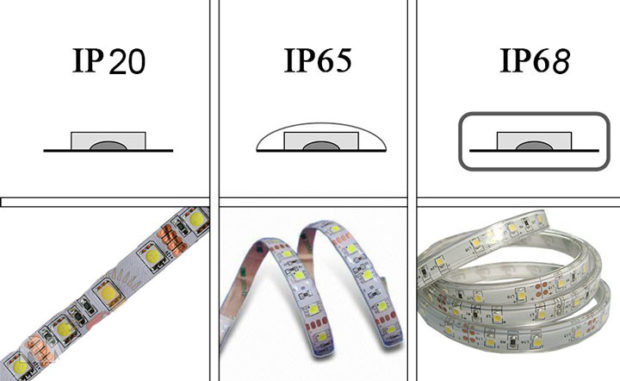
Maximum protection against dust and moisture gives PVC tube, but such tapes are used only for underwater lighting. The fact is that the tape is very hot, and the water is able to somehow cool it.
The power supply is selected with the same level of protection as the tape.
Many people think that it is better to install a tape with a higher level of protection than necessary.believing that she will last longer. Someone is guided by the ability to calmly carry out wet cleaning and mounts into the cupboard tape with IP65. The effect is exactly the opposite. In winter, when the air in the room is dry, the silicone dries up, begins to crack and crumble. It can be “led”, and as a result of such movements, the sealing layer pulls the current-carrying tracks. As a result, the light in some areas disappears.
Number 7. Wire selection
Even if a high-quality tape and a suitable power supply are purchased, the system may not work reliably due to the thin wire. Only copper wire should be used, and the cross-section is calculated based on the rule: for every 10 A voltage 1 mm is required2 wire section.
How to find out what current the tape draws? First you need to calculate the total power. For 5 m tape SMD5050-60 this (14.4 W / m * 5 m) = 72 watts. The current strength can be obtained by dividing the power by voltage. It turns out, 72 W / 12 V = 6 A. Based on the rule for calculating the cross section of the wire, we get 6/10 = 0.6 mm2. The closest standard cross-section value is 0.75 mm2. If the power supply is located at a distance of 5 m or more from the backlight, it is better to take a thicker wire - from 1.5 mm2.
It is impossible to connect tapes with a total length of more than 5 m in series - for this, parallel connection to the power supply is used.
Some experts recommend select wires based on the parameters of the power supply. The idea is that the adapter can easily withstand power surges, but a thin wire may not cope, so you need to take a cable that can withstand 135% of the rated current for which the power supply is designed.
All of the above applies to connecting the tape to the unit. The power supply itself is connected to the network with a regular 220 V cable.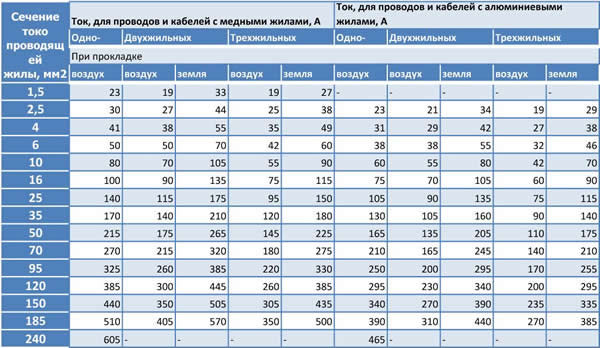
Number 8. Evaluate the quality of LED strip
Alas, far from every professional can evaluate the quality of LEDs, not to mention ordinary customers. Unscrupulous manufacturers who flood the market with frank trash are counting on this. However, There are some secrets to determine a quality product:
- LEDs and resistors are even;
- protective coating is applied evenly;
- the edges of the tape are even;
- there is a logo of the manufacturer;
- resistors have a voltage resistance of 150 ohms (labeled 151) or 300 ohms (labeled 301). In low-quality tapes, this indicator often equals 100 Ohms;
- the brightness of the diodes on the different edges of the tape is the same;
- all diodes give light of the same temperature. You can evaluate this parameter by looking at the tape through the sunglasses;
- if you bend the tape about 60 degrees, and then release it, it should retain a bend for a while.

It may be that the tape is selected high-quality, the power supply is installed suitable, and the diodes after a few months began to shine noticeably dimmer, although the manufacturer promised decades of work. The tape will last a long time if it does not overheat above 400FROM. If you leave it on for a long time, then the temperature of the diodes can increase to 800C, and with such overheating, they “age” very quickly and after 50-80 hours, the brightness decreases by 2 times. So do not stint on special aluminum profiles with a transparent cover, which effectively remove heat from the tape, however, they are expensive. Steel profiles will be cheaper, but inferior to aluminum in efficiency.
No. 9. Top LED Strip Manufacturers
We hope you already realized that a cheap tape from an unknown manufacturer will not shine for long, so it’s better not to save and purchase production verified brands:
- Gauss, China. The company LED strips are delivered to 20 countries of the world, a guarantee is given for each product, since the manufacturer is confident in the quality of the products. The assortment has monochrome and colored ribbons; diodes shine brightly and are durable. The simplest tape costs 541 rubles. for 5 m, and a multi-color tape with protection will cost 2040 rubles. 5 m - expensive, but high quality;
- Elektrostandard, China. The company specializes in the production of lighting elements, including LED strips. The assortment includes tapes for 12 and 220 V, products of different colors, with and without water protection, multi-color tapes and LED flexible neon. Prices start at 148 rubles. for 5 m (one-color, without protection) and reach 895 rubles. over 5 m (multicolor, with protection);
- Feron, China. It produces tapes with voltage of 12 and 24 V, different sizes of LEDs, different colors. Prices start from 100 rubles. beyond 5 m;
- Navigator, China produces acceptable quality tapes for 12 and 220 V. The range of products is huge: from the simplest single-color white tapes to multi-color, controlled by remote control. Prices start from 230 rubles. beyond 5 m;
- Jazzway - All the same China, but high-quality and inexpensive products. The simplest white ribbon can be bought for 270-470 rubles. beyond 5 m;
- LEDcraft, Russia - the company produces 12 and 220 V tape with varying degrees of protection. The simplest tape costs about 395 rubles. for 5 m. Quality at height;
- Products from Camelion Dreamland Era, Arlight - she will please with a pleasant price-quality ratio;
- LED strip European manufacturers Cree, Geniled, Sveteco, Joliet Technology high-quality, but expensive, so the domestic market almost did not take root.

No. 10. Selection of LED strip at the installation site
Consider the functions that are assigned to the LED strip (decorative lighting or the main light), as well as the specifics of the installation location (humidity, temperature, etc.).
Experts recommend choosing the following LED tips when choosing an LED strip:
- for highlighting the working area in the kitchen, a one-color white light tape is perfect, bright enough with IP43 / 44 protection level;

- they also use a bright white tape for lighting the garage, protection against moisture and dust will be very handy;
- for bedroom or hall lighting You can take a monochrome dull or multicolor ribbon. Protection from water is not required - it is much more important that the glow is pleasing to the eye;

- for the main traction lighting or a false ceiling choose a bright one-color tape, the calculation of the luminous flux is required;
- for bathrooms use only the protected version of the tape, IP43 / 44. For the ceiling, a white one-color tape is suitable, and for highlighting mirrors, niches, bathtubs, a color or RGB tape;

- in kids room too bright light is inappropriate. LED strip is best used only in the play area, to decorate the interior. Choose a product with a soft, muted glow;
- for the illumination of shelves of cabinets, the simplest tape without protection is suitable;

- special ribbons are used to highlight arches, which can be easily bent even at an angle of 90 degrees;
- for street lighting they take a tape with IP 54/55 protection and a voltage of 220 V, a power supply unit is not needed, a voltage rectifier is used instead. You can decorate with such lighting the facade of the house, shop windows, garden paths, etc .;

- for underwater lighting you need a tape in a PVC box. Choose your own color - in any case, the effect will be fabulous.

LED strip can highlight niches, catwalks, ceiling and baseboards, bar counters, cornices, stairs and even furniture (the contour of a bed or shelves in cabinets) - the scope for creativity knows no bounds. The main thing is to choose the right LED strip, and our tips should help you understand this issue.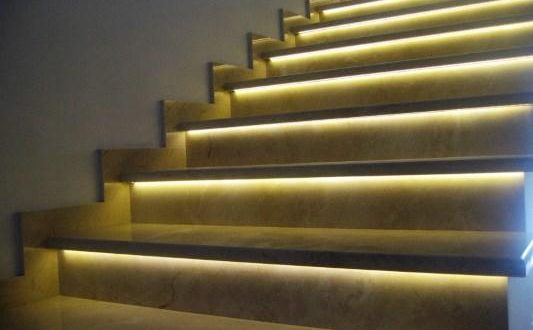

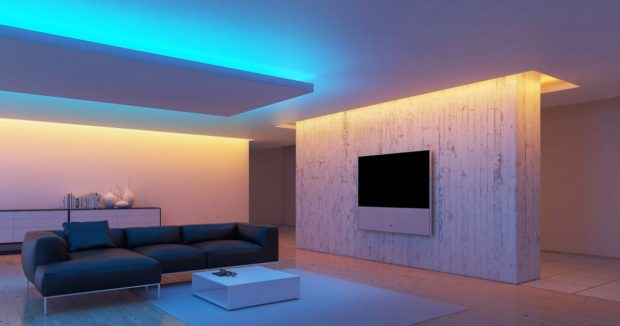
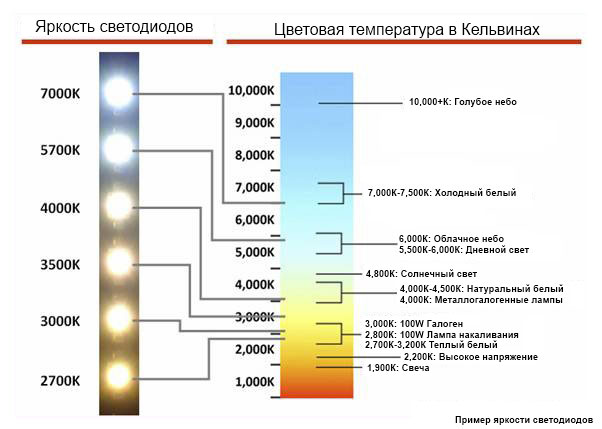
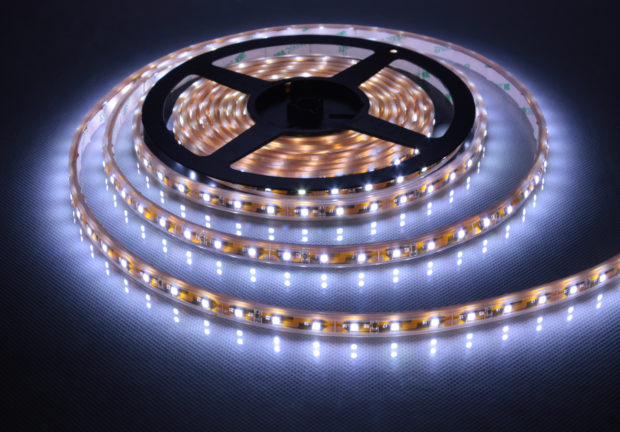
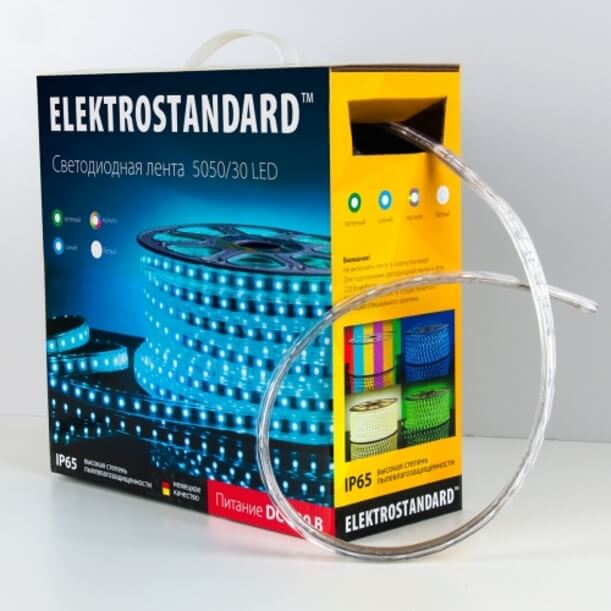
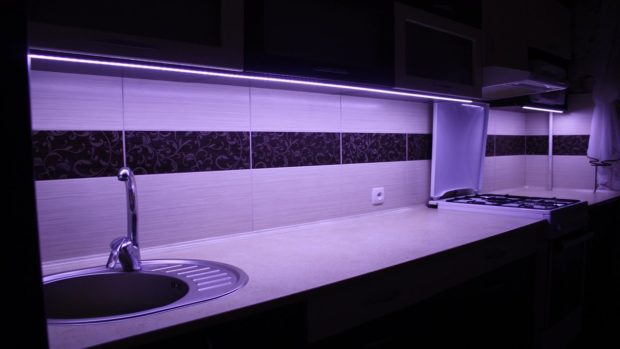
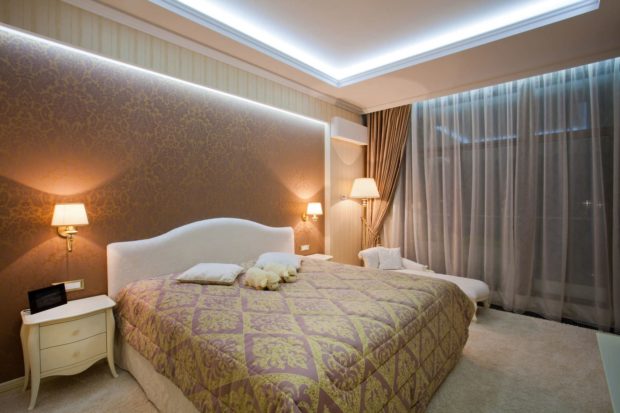
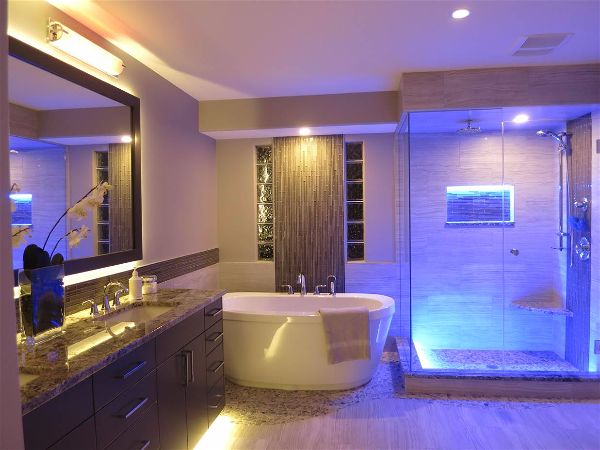
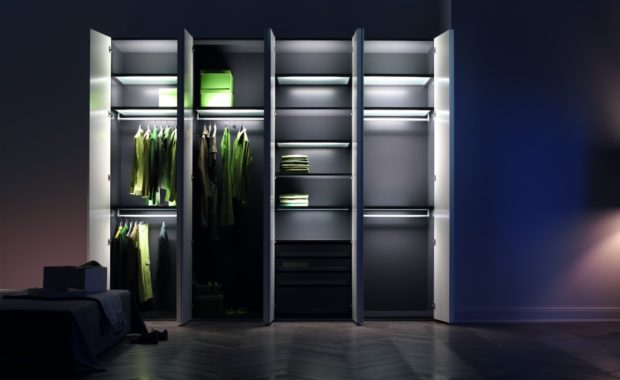
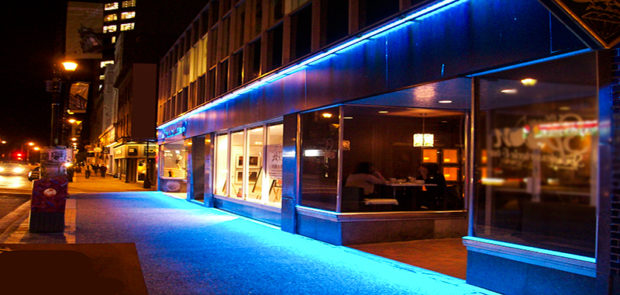
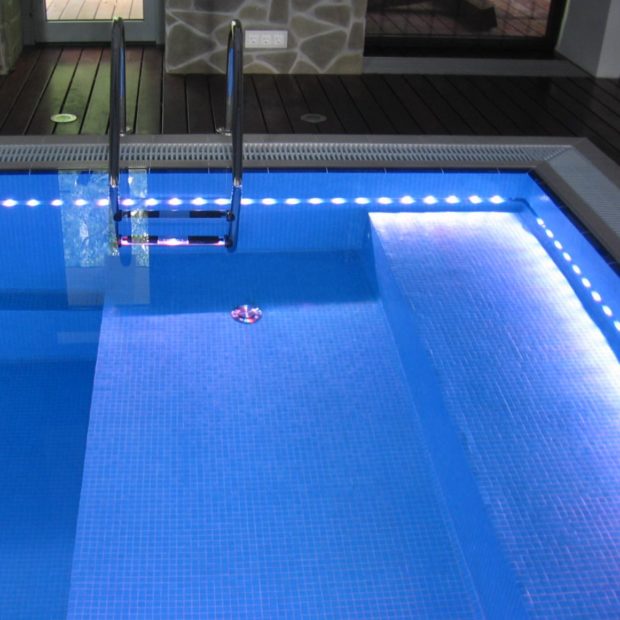

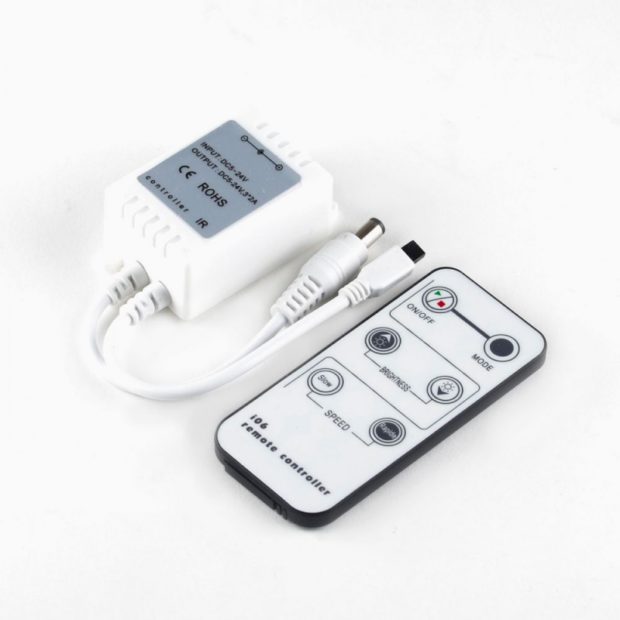
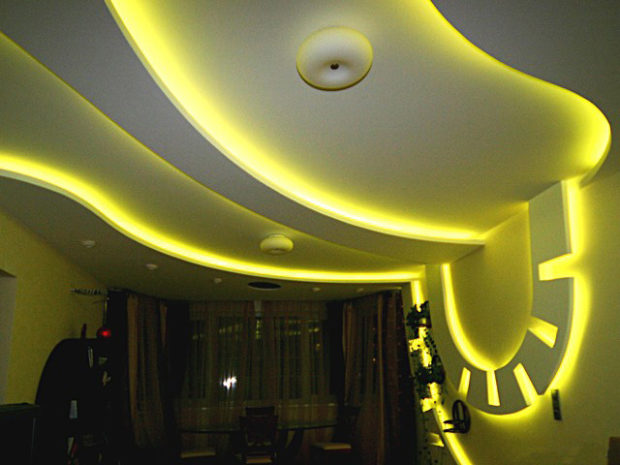
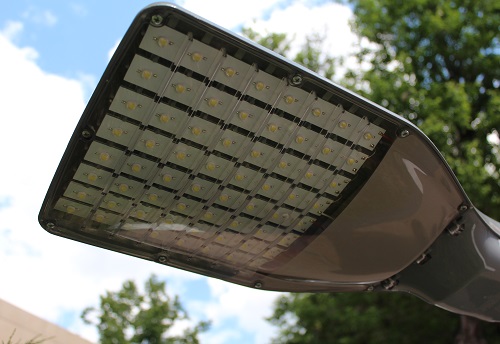
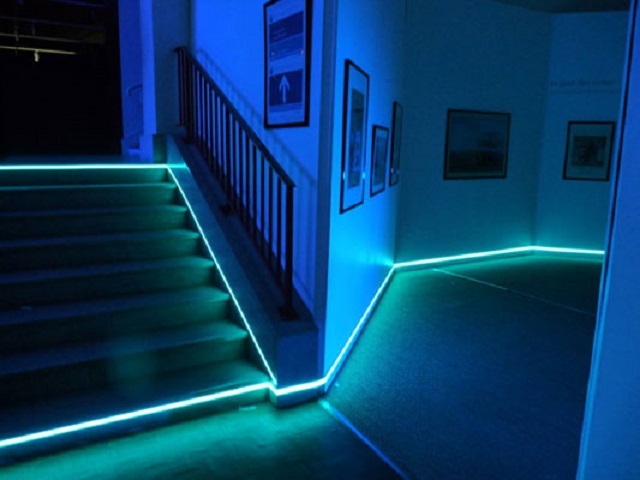
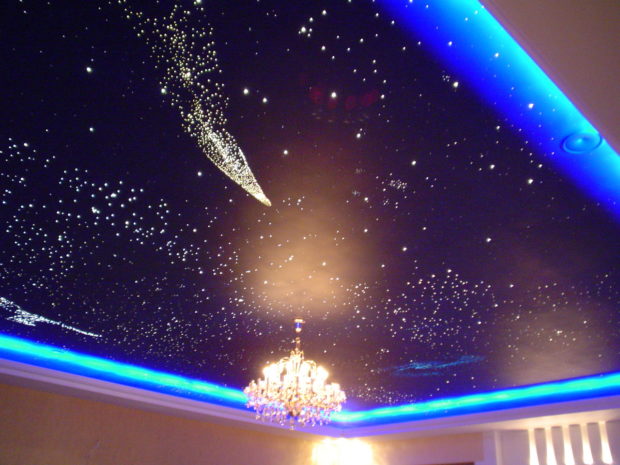
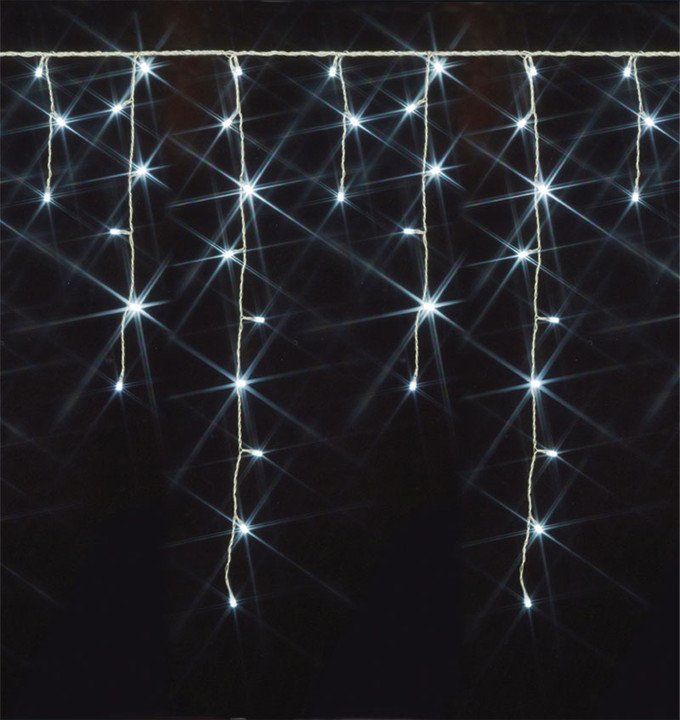
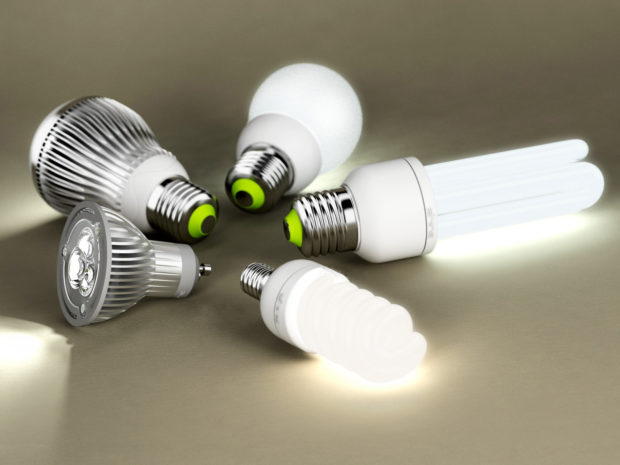
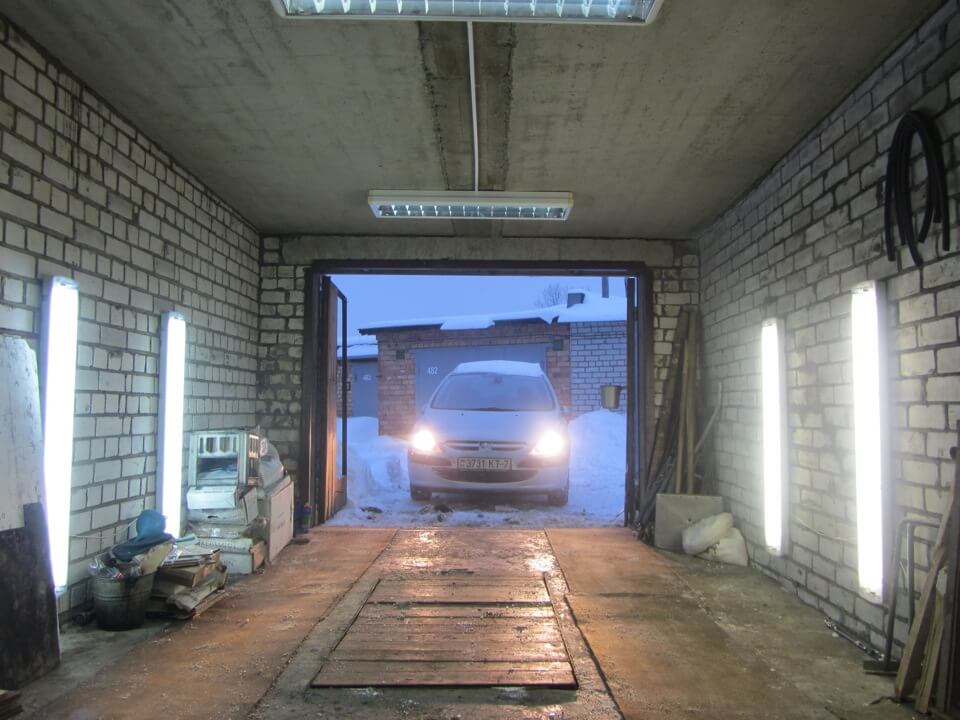
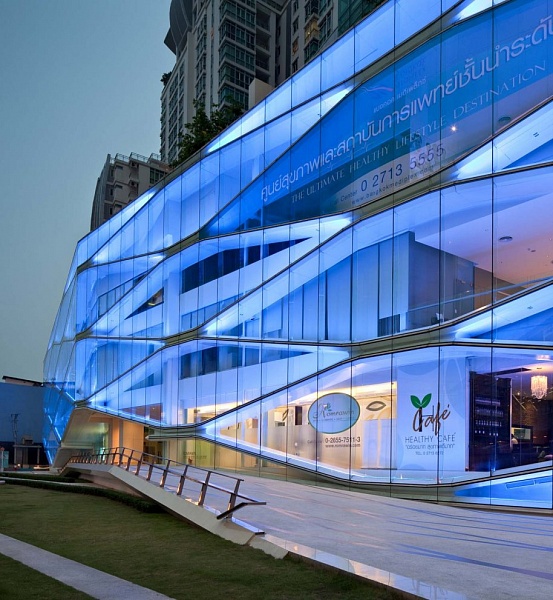
Thank you very much for the article! Very detailed everything is painted!